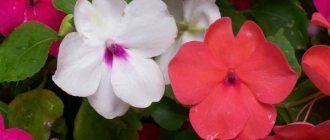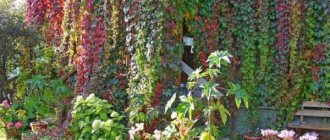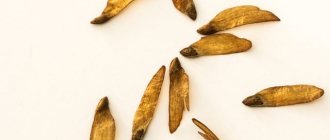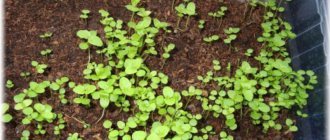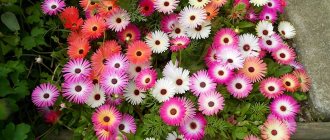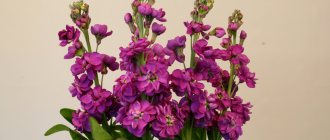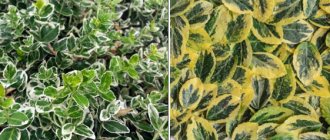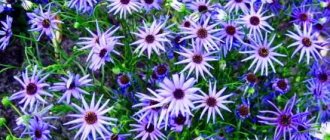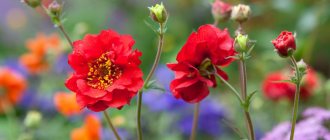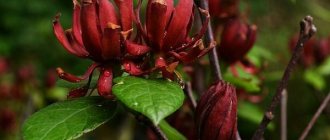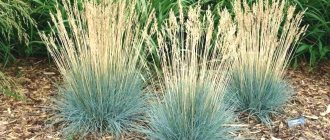Description of Nemophila
Nemophila is a climbing plant that, when grown, spreads along the surface of the soil. The stems grow in different directions, rising 10 cm in plantings, and freely falling in hanging flowerpots. Elongated pinnately dissected leaves grow on the stems. They are painted bright green and densely covered with pubescence. Peduncles are raised 30 cm from the plant. The calyx is up to 4 cm in diameter, of various colors, often two-colored. Its shape is similar to a buttercup flower. Each bud contains 5 petals. After flowering, nemophila produces seeds. They are ovoid in shape and have a smooth or wrinkled surface.
Nemophila flowers for flower beds surprise with their diversity
The American forget-me-not belongs to the Waterfolia family.
The culture's middle name indicates that it originates from California. In its natural habitat it is found in the southeastern and western United States, as well as in Canada and Mexico. Typically, the annual crop blooms in the spring. You can recognize it by the following signs :
- creeping stems 20-30 cm long;
- pinnately lobed foliage (opposite, pubescent) of emerald hue;
- five-petalled corollas (2-5 cm in diameter), connected at the base;
- wrinkled oval-shaped seed pods (contain up to 20 seeds).
Charming flowers for flower beds, nemophila are valued for their variety of luxurious colors. These are usually two-color varieties. At the same time, the area of the pistil and stamen always has a snow-white appearance.
The second color of the petals can be:
- sky blue;
- lilac;
- violet;
- purple;
- all shades of blue.
A decorative feature of the flowers are contrasting veins that stand out sharply against the white background of the center. In addition, the club-shaped stamens resemble luxurious pearls in an exquisite shell. In addition, some varieties are known for their variegated colors and fascinating patterns. In Russia, only 2 varieties of American forget-me-not are popular: spotted and mencisa.
The blue-eye genus has 11-13 species. Hundreds of unique varieties with excellent decorative properties have been bred from them.
Polyhedral nemophila Mencis
The Nemophila menziesii variety is distinguished by its rather small flower size. Bell-shaped buds with 5 petals are designed in blue-blue tones. The corolla is decorated with a contrasting white spot in the center. At the same time, Nemophila Mencisa blue fascinates with its rugged leaves. The strongly dissected plates are covered with dense pubescence. Thanks to this, the light green foliage acquires a slight silvery tint.
Among gardeners, varieties are especially popular:
- nemophila Baby Blue Eyes (with a light core);
- Snow White or white snow (pure snow-white shade);
- Atomaria or Snowstorm (dark decorative strokes at the base of white petals);
- nemophila Penny Black or Discoidalis (dark purple corollas with a pearly border and center).
The stems reach a height of only 10-15 cm. They can be erect or branched. Quite thin and weak, but have slight compaction at the nodes. The flowering period is from June to September. The flower acquires an extraordinary decorative effect in the blooming phase, since it resembles an exquisite porcelain service, but only in the garden.
In addition to white and blue colors, unusual pink and even red shades of petals are often found.
Fascinating Nemophila spotted
The species Nemophila maculata is characterized by the presence of contrasting lines and spots. In most cases, Nemophila spotted has a cup-shaped corolla of a white hue. Due to the lilac-purple veins, the effect of a slight blue-violet iridescence is created. Moreover, each petal is decorated with a stamp of a mysterious shade of indigo with light mother-of-pearl.
Breeders have developed several varieties of American spotted forget-me-not:
- Five spot or Five spot (purple veins and spots);
- Barbara (heart-shaped inclusions of a purple hue at the top of the petals);
- Ladybug (symmetrical spots of sky blue/purple shades on a white background).
Spotted nemophila is particularly frost-resistant, for which it is highly valued by gardeners.
The varieties are especially impressive due to their openwork foliage, which is exquisitely planted on thin stems (20-25 cm). In June (or on the 40th day after sowing the seeds), large five-lobed flowers (4-5 cm in diameter) appear.
Popular varieties
America is considered the birthplace of culture. It is known as the American forget-me-not. There are many varieties of nemophila common. The most popular for cultivation are:
- Spotted nemophila;
- Mentsis;
- Atomaria;
- Coelestis;
- Penny Black.
Nemophila spotted
This variety is distinguished from others by the shape of the flower cup. It resembles a bell, only white in color. There is a dark spot in the middle part of each petal. After the flowering period, the plant forms a seed pod. It gives nemophila a decorative appearance. When grown, the height of the flower crop in planting is about 20 cm. The shoots creep and branch. The pinnately lobed leaves and shoots have slight pubescence.
Nemophila Mencisa
The calyx of the flower takes the shape of a wide bell of pale blue or dark purple color. There is a thin white stripe along the edge. There are flowers with a white, cornflower blue or lilac color with a brown spot. The buds are located in the axils of the leaves. The diameter of the flower is up to 3 cm. Nemophila, when grown, forms plantings up to 15 cm high. The long leaves are strongly pinnately dissected and spotted.
Atomaria
Has white petals. There are dark dots in their center.
Coelestis
It has flowers, the middle part of which is whitish. And the border of the flower is blue.
Penny Black
This is a nemophila with an almost black or dark purple color. It has a white edge along the edge of its petals.
3.Varieties:
3.1. Nemophila menziesii - Nemophila menziesii
A bright, blue nemophila, which is a herbaceous plant from 15 to 30 cm in height. Nemophila has thin, offensively branched stems at the base, on which are palmately dissected, green leaves, covered with slight pubescence. The leaves reach 5 cm in length. The flowers are bright, blue, with five rounded petals, often with a white tint in the center. The flowering period begins in May - June, the flowers very offensively cover the plant, often hiding the leaves underneath.
↑ Up,
3.2. Spotted nemophila - Nemophila maculata
Attractive, flowering, annual herbaceous plants from 15 to 30 cm in height. The stems are thin, flexible, covered with long pubescence. The leaves are green, also covered with a small fluff, pinnate, arranged in opposite pairs. The flowers are cup-shaped, with five oblong petals, reaching a diameter of 4 cm. A distinctive feature of this species is the color of the flowers - the white petals have small dark blue spots on the edges.
↑ Up,
Seedling growing method
Nemophila can be grown from seeds at home like any annual. It does not tolerate transplantation well due to the sensitivity of the root system. But since in the temperate climate of Russia the snow cover melts quite late, and it is desirable to have beautiful flowering plants in the garden earlier, they practice growing seedlings. If you handle it with extreme care, it will germinate successfully.
When to plant
Nemophila is grown for seedlings from seeds at a time that depends on the climatic characteristics of the region. If planting is planned for the second half of May, then the seeds should be sown in early April. By this time the seedlings will have grown stronger.
Soil and container
For sowing, soil is taken from sand and peat. To grow nemophila from seeds, different containers are used:
- containers;
- small pots;
- pallets.
Advice! Experienced gardeners recommend using peat pots for growing. So, transplanting into open ground will be convenient and simple, the root system remains unharmed.
Sowing seeds for seedlings
Growing nemophila from seeds differs little from other ornamental crops. Still, there are some features:
- the seedling container is filled with soil and moistened;
- the seeds are buried 1 cm, placing them at a distance of 5-8 cm;
- the soil is moistened with a sprayer and covered with polyethylene;
- leave for germination in a bright place;
- As soon as the seeds sprout, immediately remove the shelter.
Seeds germinate within 2 weeks. With sufficient lighting and a temperature of +14 degrees, seedlings will appear in 10 days. At higher temperatures - later.
Seedling care
When growing nemophila seedlings, do not pick them up so as not to damage the roots. Therefore, when planting, the required distance is immediately maintained. It is necessary to regularly monitor its growth. If the seedlings stretch, then additional lighting is needed.
Before planting, grown seedlings are hardened in air, on cool days - 1-2 hours, on warm days - 7-8 hours.
Planting seedlings on the site
By the time of transplanting into a flower garden or flower bed, the plants should have grown to 8-10 cm. If you plan to use nemophila as a ground cover plant, you need to plant it after 15-20 cm. The seedlings are transferred into the ground with a clod of earth.
Plant characteristics
Nemophila is native to the North American continent. It is most often found wild in Canada, Mexico and the southeastern United States. The British call it blue-eyed, and the Russians call it American forget-me-not. This is a beautiful plant with a surprisingly delicate bud, but it only blooms for 1 year. Therefore, it requires annual sowing. Its stem grows up to 25 cm, and meanders along the ground. Buds with symmetrical, bowl-shaped petals grow from the axils of the leaves.
The flowers are small - only 3 cm in diameter; you can find a variety of petal colors from sky blue to ultramarine blue with white and beige splashes. In the wild there are species of white and pale yellow shades.
Nemophila is grown from seeds. Planting material purchased once remains fresh for a long time; it is suitable for planting even after 2 years. There are up to 400 seeds in one gram. Choosing this plant is a good solution for decorating a flower bed in the garden. This is one of the longest blooming flowers. The first buds bloom in early summer, and the last ones fade only by mid-autumn. If you let the capsules ripen, you can collect a lot of seeds. In some varieties they are smooth, in others they are wrinkled. In order for planting material to retain good germination, it must be stored in a dry place at a temperature of 10 to 25 degrees.
Planting seeds directly into the ground
Nemophila can be sown with seeds directly into the soil. Experienced gardeners grow this way because the crop is difficult to transplant. She has a very sensitive root system.
Landing dates
Nemophila survives frosts well, so sow the seeds early. Work with this plant can be carried out from the end of March to June. It all depends on climatic conditions and the time the snow cover melts in the region. If planting is carried out in April, nemophila will bloom in the summer. If you want the plant to bloom in the fall, sowing is carried out in July. The plant blooms 7 weeks after sowing the seeds. The first shoots germinate within 2 weeks. At this time, it is necessary to maintain optimal soil moisture.
In order to create the effect of constant flowering when growing, gardeners plant nemophila seeds gradually, at intervals of 2 weeks - from April to July.
Site selection
Nemophila can be grown in any area: sunny, in shade and partial shade. Of course, in an area that is well lit, it will grow faster and bloom more abundantly.
It is important to prepare breathable soil and create a drainage layer. To prepare the nutritional composition, take in the same proportions:
- humus;
- turf soil;
- sand.
Advice! It is recommended to add 1 tbsp to one bucket of prepared mixture. l. chalk. It neutralizes acidic soil.
Landing rules
When growing nemophila from seeds directly in the ground, gardeners recommend preparing the seeds in the spring:
- Take a container with holes and fill it with the prepared soil mixture.
- For prevention, the soil is doused with boiling water.
- Place the seeds on the surface of the soil and sprinkle with a little soil.
- Leave the container cool, but with enough light.
- Regularly moisten the soil by spraying.
- Do not close the top of the container.
The seeds will be ready for planting in open ground after 10-14 days. In summer, seed material does not need to be specially prepared for sowing.
When growing in open ground, follow the same rules as when growing seedlings:
- Prepare the area for planting and moisten it.
- The seeds are buried no more than 5 cm.
- 15-20 cm is left between neighboring plants.
- Breathable, light soil is poured on top.
- Monitor germination and remove weeds.
- As soon as seedlings appear, the soil surface is mulched.
- Provide moisture to the area.
Care during and after flowering
Mandatory activities:
- frequent watering;
- fertilizing with mineral fertilizers with a mandatory increase in the proportion of phosphorus and potassium to support buds;
- spraying if it is hot. The procedure is carried out only in the evening or in the morning;
- if nemophila grows in a small area, then it is useful to loosen the soil;
- Mulching to preserve moisture in the soil is carried out until the plants are very elongated and branching stems do not interfere with the passage of the grower for carrying out agrotechnical measures.
Care
Growing the crop is quite simple. Most of all you need to pay attention to watering, fertilizing, and weeding. Weed removal must be carried out during the initial growing period. This should be done regularly until the weeds have become stronger, and carefully so as not to damage the nemophila roots. As the crop grows, it will occupy the entire surface of the soil, leaving no room for weeds to grow.
Nemophila does not tolerate even mild cold weather and dies immediately. It’s easier to remove everything in the spring, after the snow has melted. If the appearance of a flower garden is spoiled by dead plants, tear them out by their roots.
Fertilizer
Nemophila thrives in fertile soils. If it is grown on nutrient-rich soil, additional feeding is not needed. On poor soils, fertilizers are applied 2 times during the warm season. The first time - during the formation of buds, the second - during the period of mass flowering.
For plants grown in containers and pots, the amount of fertilizing is increased. Since space is limited, nutrients are scarce. Ideally, weekly feeding is needed throughout the growing season.
Gardeners use complex fertilizers for flowering crops.
Trimming
Regular pruning is not necessary. Buds that bloom fall off the stem on their own. Gardeners carry out only formative pruning. They do this to make the area look neat. After pruning, nemophila produces new branches, grows stronger and blooms profusely.
Watering
When growing nemophila, you must remember that it is very demanding of moisture. It needs to be watered regularly with warm, soft water. Ideally, the temperature of the liquid should not differ greatly from the air temperature.
Gardeners loosen the soil before watering so that water flows faster to the root system. The soil surface should always be slightly moist. Without sufficient moisture, the buds will quickly wither.
Advice! From time to time, gardeners practice spraying plants when growing nemophila. It is better to do this in the morning or evening.
Overheating of the soil is also dangerous for nemophila. To prevent this from happening, mulch the soil. It is covered with a layer of moss or wood shavings as soon as the seedlings sprout. A layer of mulch will not only protect from overheating, it will also retain moisture and prevent weeds from growing.
If the soil surface is mulched, you can water less often.
Diseases and pests
Nemophila is a new plant for Russia. Therefore, it does not yet have natural pests. Slugs can cause damage to it. They eat the stems and destroy the plant. To combat slugs, use an infusion of wood ash. He helps a lot. It is not necessary to treat with chemicals at all.
Diseases when growing nemophila are associated with improper care. It is important to maintain sufficient water balance. Drought and excessive watering are detrimental to the plant.
Sometimes gardeners note pest attacks:
- whiteflies;
- aphids;
- spider mite.
Treatment with Actellik helps; it is repeated after 7 days as necessary. The drug is not recommended for use at high temperatures.
Rare cases of gray mold disease have been observed when growing nemophila. It can be defeated in the early stages of infection. At the first signs, the flower garden is treated with fungicides: “Hom”, “Skor”, “Topaz”.
Diseases and pests of American forget-me-not
Nemophila is advantageous because in the Eastern European region it has practically no enemies among insects. Therefore, treatment with chemicals is not necessary. The only thing that can harm this resilient plant is slugs. But they also eat only young shoots.
Nemophila pests - slugs
Plants also show enviable resistance to diseases. The main enemy of nemophila is only dry soil, but this is easily eliminated by frequent watering and mulching. Remember that moist, loose soil is important for the plant.
The use of nemophila in landscape design
Nemophila is grown as a container crop, in independent plantings and compositions with other plants.
The annual looks good as a ground cover crop in the garden between trees and shrubs.
Use it to decorate a low border. Grown to fill the space between ornamental bulbous or corm plants in flower beds.
Well suited for decorating the banks of ponds and streams.
Advice! Nemophila is recommended to be grown in the foreground, as it is not tall. For potted plants it is used as undergrowth.
The culture perfectly complements any ornamental plants: clematis, roses, and other large-flowered crops.
A good combination is obtained by growing the crop next to bells, daisies, phlox and other plants that bloom in the summer-autumn period.
Nemophila is grown for edging flower beds, garden paths, and lawns.
Collection and storage of seeds
A simple procedure is carried out after flowering has ended, when the boxes on thin stems have dried. You should not wait until the base with seeds is completely dry: you can “lose” some of the seeds, and planting by self-sowing may not be so successful: the plant is not winter-hardy.
After collection, the boxes are carefully opened, the seeds are poured onto clean paper, and the planting material is dried for several days in a warm but cool room. The prepared seeds are poured into paper bags or linen bags. Store planting material in a damp place at a moderate temperature: +16…+18°C.

